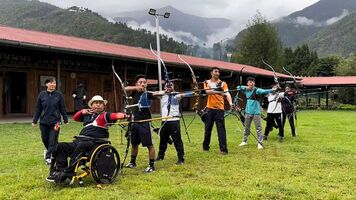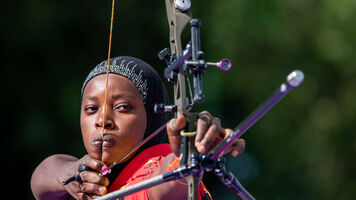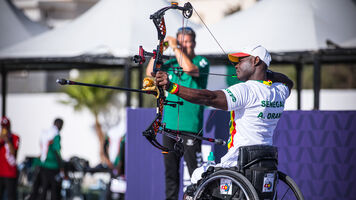Building bridges between traditional and Olympic archery in the Kyrgyz Republic
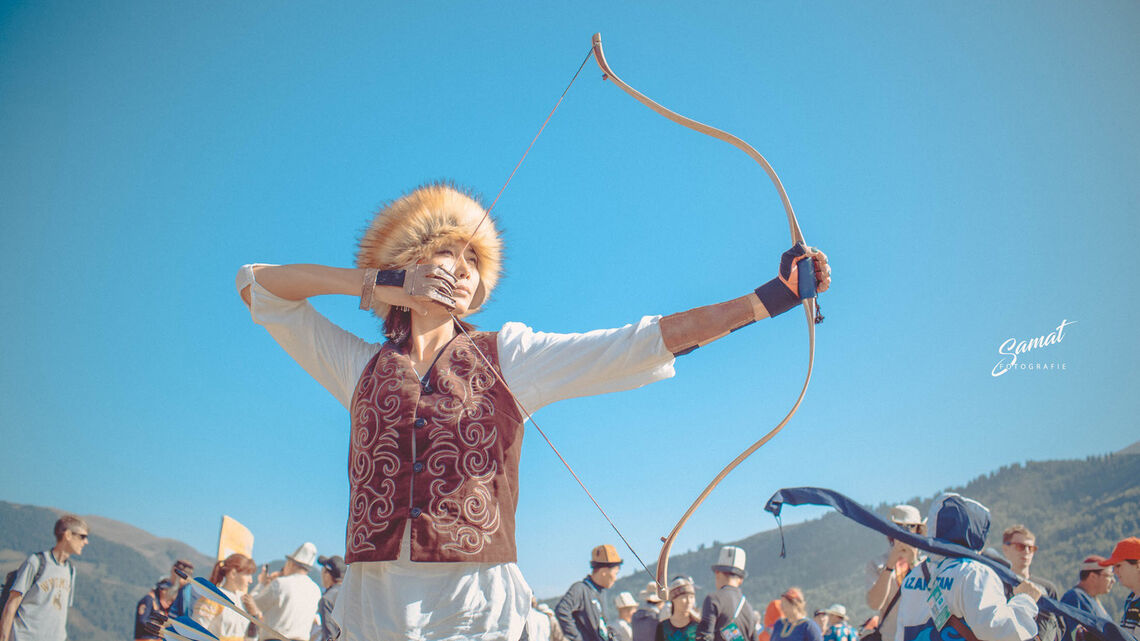
Archery has strong historical roots in countries around the world. It’s been a part of human history for millennia. The modern sport celebrates this heritage while showcasing the skills that have made archers successful throughout the ages.
A national federation was founded in the Kyrgyz Republic in 2002 to grow competitive archery. At the moment, there are only around 50 archers shooting the Olympic style in the country but the traditional side of the sport is popular.
Like much of the world, archery is ingrained in the country’s history. Many Kyrgyz people consider it a traditional activity – and an activity they are traditionally good at.
A classic bow from the region is similar to that of Hungary.
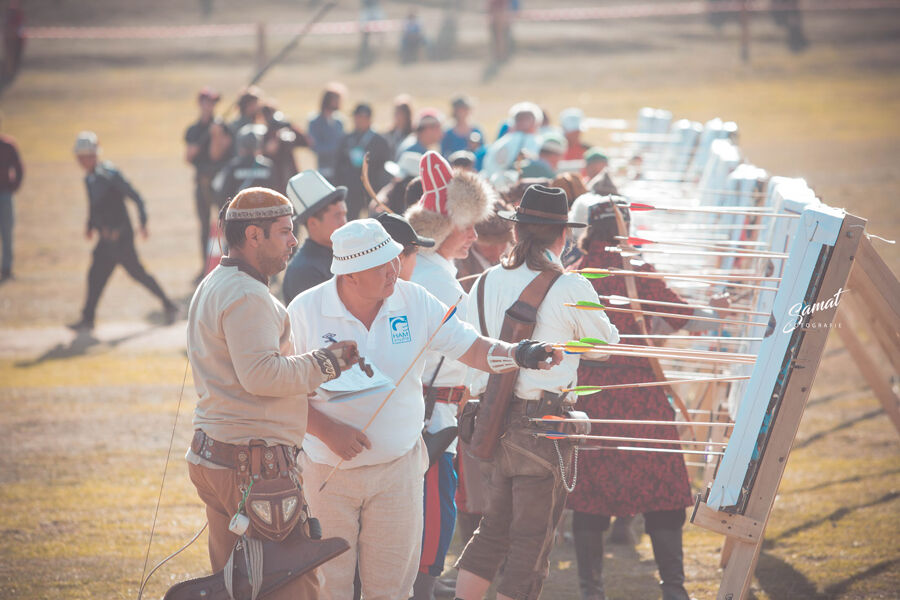
Male archers compete over 40 metres, women over 35 – standing, kneeling on one leg or from horseback, which is experiencing a slow revival. Horseback archers compete by shooting at three targets while riding along a 120-metre line.
The Kyrgyz Republic wants to send archers to the Olympic Games.
That goal will only be achieved with a strong sports structure – and that is why Dutch expert Andre Korlaar has travelled to Kyrgyzstan three times over the last year.
His first trip saw a re-write the national federation’s constitution, meetings with sports partners and some time on television. Andre, elite archer Asel Sharbekova and coach Zair Berdibaev gave a live interview on NTS.
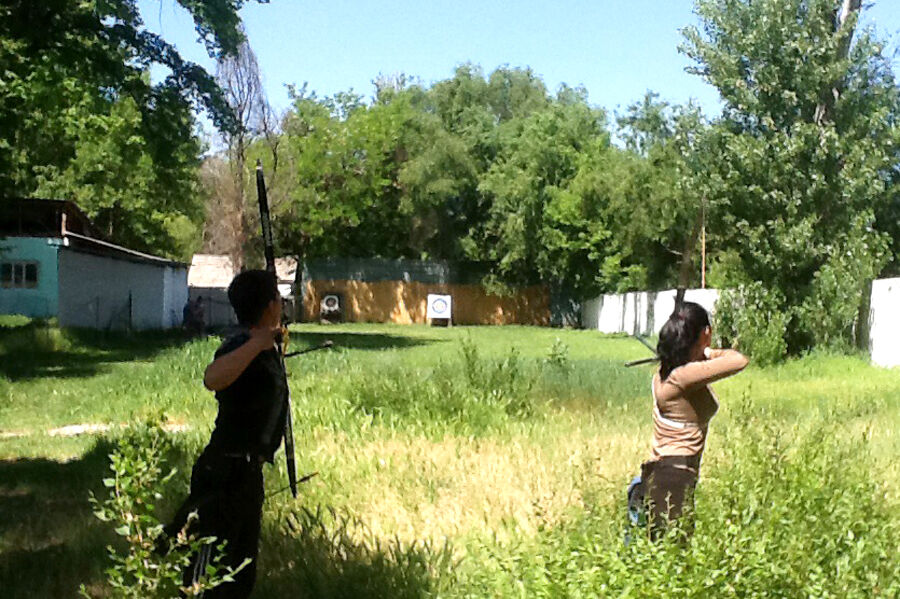
Andre’s second visit to the Kyrgyz Republic was dedicated to educating judges, using literature borrowed from the federation in Russia. While the national language in the Kyrgyz Republic is Kyrgyz, Russian is also widely spoken.
The last stay, which came in late April 2019, coincided with an entry-level coaching course. It was attended by the country’s two official archery coaches, three physical education school teachers and archers from all corners of the sport.
“Some of the Olympic archers practise the traditional nomad archery as well, which is a good thing to build the bridge between the styles,” said Andre.
“There is much in common between these two disciplines that unifies us, and there is not so much that divides us.”
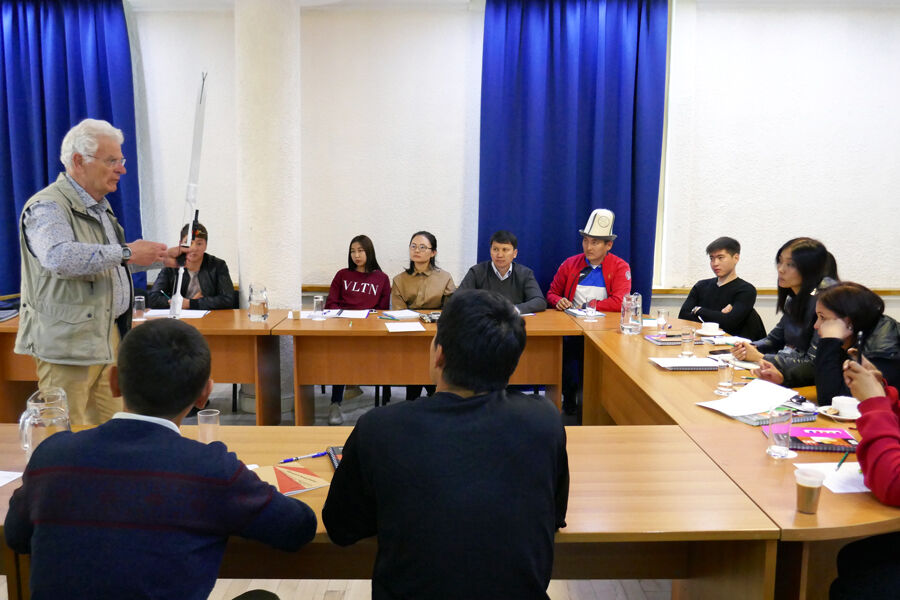
Despite its strong traditional identity in the sport, no archer from the Kyrgyz Republic has yet been to an Olympics. The small steps taken over the past year have the federation on the path to change that.
Perhaps by building bridges between the two styles, old and new, archery might lean on its past into a brighter future.
Pictures courtesy Samat Durusbekov from the 2018 World Nomad Games.







